RECOMMENDED READING: Is this the perfect Patek Philippe?
 Patek Philippe are not known for hi-tech carbon composite case materials, skeleton dials, or really any enthusiastic contemporary flair. What they are known for is being the priest of the Temple of Classicism, considered and purposeful in any direction of development, refusing to bend to ephemeral market tastes. The clearest way this can be seen is how little the design DNA (yes, I know you think that term is overused, GaryG) of their watches has changed over the last century. This lack of dramatic change forces those interested into the trenches of granularity to ascertain the importance of any particular Patek Philippe reference, specifically in the Calatrava family. One watch that appears perfect initially, and remains perfect no matter how close you inspect it, is the ref. 2526. The ref. 2526 is, in my mind, less of a watch, and more the platonic ideal of a watch, something you might show to an alien to communicate the perfect example of what a watch should be. One of the best-looking examples of a Patek Philippe ref. 2526 is the one pictured above, in yellow gold with a black enamel dial. Fortunately for all of us, GaryG wrote an article for Quill…
Patek Philippe are not known for hi-tech carbon composite case materials, skeleton dials, or really any enthusiastic contemporary flair. What they are known for is being the priest of the Temple of Classicism, considered and purposeful in any direction of development, refusing to bend to ephemeral market tastes. The clearest way this can be seen is how little the design DNA (yes, I know you think that term is overused, GaryG) of their watches has changed over the last century. This lack of dramatic change forces those interested into the trenches of granularity to ascertain the importance of any particular Patek Philippe reference, specifically in the Calatrava family. One watch that appears perfect initially, and remains perfect no matter how close you inspect it, is the ref. 2526. The ref. 2526 is, in my mind, less of a watch, and more the platonic ideal of a watch, something you might show to an alien to communicate the perfect example of what a watch should be. One of the best-looking examples of a Patek Philippe ref. 2526 is the one pictured above, in yellow gold with a black enamel dial. Fortunately for all of us, GaryG wrote an article for Quill…
The post RECOMMENDED READING: Is this the perfect Patek Philippe? appeared first on Time and Tide Watches.
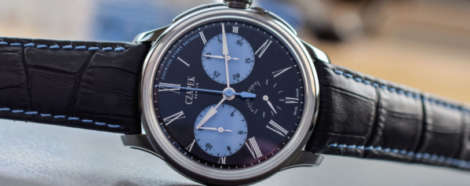
 Editor’s note: A couple of years ago, life got a lot easier for the Melbourne Rolex collector. Rolex Australia blessed the coffee-obsessed city with a shiny new service centre, a move that made the already appealing prospect of buying a Rolex even more appealing, with the knowledge that a repair would be as pain-free as possible. Let’s take a look back at when Felix got to visit the centre shortly after it opened. One of the biggest issues in this industry is what happens to a watch long after it leaves the boutique on the wrist of its happy new owner. Aftersales support and servicing may not be as glamorous as releasing shiny new watches, but it matters. A lot. There’s no quicker way to ruin goodwill towards a brand than with a negative service or repair situation and, from the anecdotal stories I hear, it’s happening all too often, with common complaints including long wait times, unexpected costs, and processes that can be baffling in their bureaucracy. Still, it’s easy to see why aftersales support doesn’t get the attention it deserves. There are no immediate returns to be had by investing in servicing. If you had to sign off…
Editor’s note: A couple of years ago, life got a lot easier for the Melbourne Rolex collector. Rolex Australia blessed the coffee-obsessed city with a shiny new service centre, a move that made the already appealing prospect of buying a Rolex even more appealing, with the knowledge that a repair would be as pain-free as possible. Let’s take a look back at when Felix got to visit the centre shortly after it opened. One of the biggest issues in this industry is what happens to a watch long after it leaves the boutique on the wrist of its happy new owner. Aftersales support and servicing may not be as glamorous as releasing shiny new watches, but it matters. A lot. There’s no quicker way to ruin goodwill towards a brand than with a negative service or repair situation and, from the anecdotal stories I hear, it’s happening all too often, with common complaints including long wait times, unexpected costs, and processes that can be baffling in their bureaucracy. Still, it’s easy to see why aftersales support doesn’t get the attention it deserves. There are no immediate returns to be had by investing in servicing. If you had to sign off…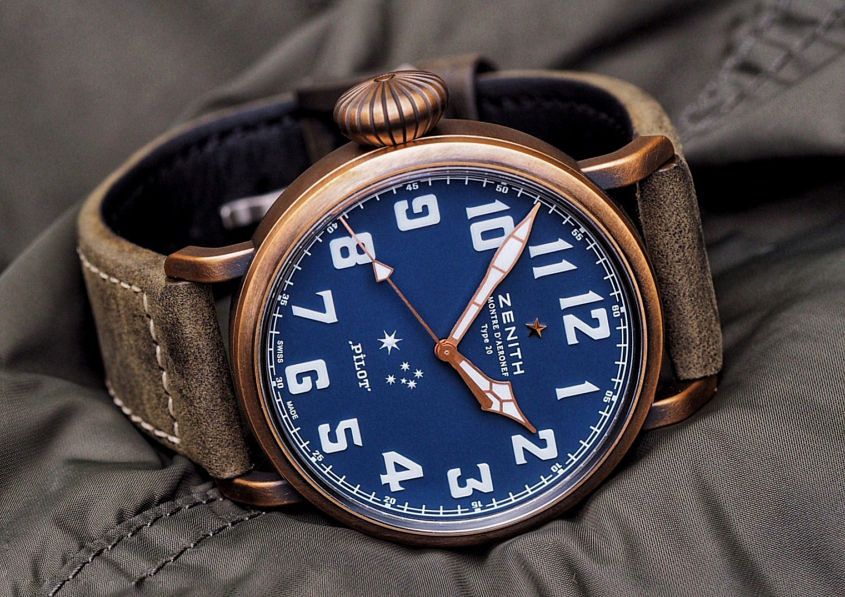 Editor’s note: The Australian Watch Forum has gone from strength to strength over the last 18 months, tripling its membership to 9000 members. Based on Facebook, their presence has been felt well outside of social media, with regular meet-ups and get-togethers in major cities across Australia. Here’s a throwback to Cam’s nod to their first venture with a big watch brand, when they partnered with Zenith last year to release a bronzed-case Pilot Type 20 Extra Special, featuring a special Southern Cross on the dial. During a time when planes were more fabric than steel, and I’m sure the phrase “on a wing and a prayer” had a much more literal meaning, Zenith were pioneering the use of pilot watches, with French aviator Louis Blériot wearing a Zenith on his wrist as he made the first ever flight across the English Channel in 1909. In fact, Zenith were so early to reach the skies that they are the only brand that can use the word “Pilot” on a watch dial, thanks to them being marketing-savvy and trademarking the term. All this is a roundabout way of saying that Zenith’s Pilot collection has some serious cred. This year, the well-received bronzed-case…
Editor’s note: The Australian Watch Forum has gone from strength to strength over the last 18 months, tripling its membership to 9000 members. Based on Facebook, their presence has been felt well outside of social media, with regular meet-ups and get-togethers in major cities across Australia. Here’s a throwback to Cam’s nod to their first venture with a big watch brand, when they partnered with Zenith last year to release a bronzed-case Pilot Type 20 Extra Special, featuring a special Southern Cross on the dial. During a time when planes were more fabric than steel, and I’m sure the phrase “on a wing and a prayer” had a much more literal meaning, Zenith were pioneering the use of pilot watches, with French aviator Louis Blériot wearing a Zenith on his wrist as he made the first ever flight across the English Channel in 1909. In fact, Zenith were so early to reach the skies that they are the only brand that can use the word “Pilot” on a watch dial, thanks to them being marketing-savvy and trademarking the term. All this is a roundabout way of saying that Zenith’s Pilot collection has some serious cred. This year, the well-received bronzed-case…
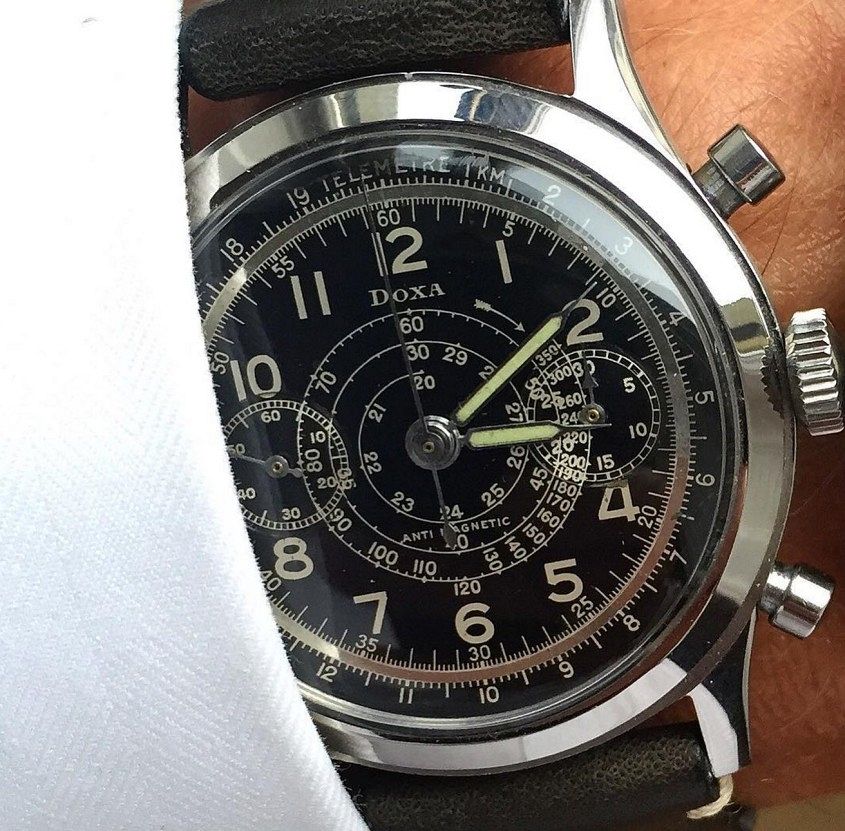 Editor’s note: Everyone knows Doxa make a great dive watch, but not as many people know they also produced excellent chronographs in the 1940s and ’50s. This is the story of one of those watches, a black dial Doxa chronograph with a spiral telemeter scale, worth significantly more than the €1200 Paul originally laid down for it. Enjoy. WHAT IS THE STORY OF THIS WATCH? I bought it at the Munich Watch Fair a few years back for 1200 euro. I’ve since been offered 5000 euro for it. I’ve collected watches since I was 11. My grandfather gave me a wristwatch and I’ve been hooked since then. It was an American brand, Gruen Curvex. As a young boy I’d go to flea markets and fairs. It was mechanics and all that. The thing about chronographs is that people don’t use them. It seems to be more about the dial layout. The balance perhaps? This one is beautiful with the outer telemeter scale and the spiral tachymeter scale — very much of the times. It’s a bit like an ironing board, you don’t really use it that often. I actually race cars and I do use a chronograph then, but it’s usually…
Editor’s note: Everyone knows Doxa make a great dive watch, but not as many people know they also produced excellent chronographs in the 1940s and ’50s. This is the story of one of those watches, a black dial Doxa chronograph with a spiral telemeter scale, worth significantly more than the €1200 Paul originally laid down for it. Enjoy. WHAT IS THE STORY OF THIS WATCH? I bought it at the Munich Watch Fair a few years back for 1200 euro. I’ve since been offered 5000 euro for it. I’ve collected watches since I was 11. My grandfather gave me a wristwatch and I’ve been hooked since then. It was an American brand, Gruen Curvex. As a young boy I’d go to flea markets and fairs. It was mechanics and all that. The thing about chronographs is that people don’t use them. It seems to be more about the dial layout. The balance perhaps? This one is beautiful with the outer telemeter scale and the spiral tachymeter scale — very much of the times. It’s a bit like an ironing board, you don’t really use it that often. I actually race cars and I do use a chronograph then, but it’s usually…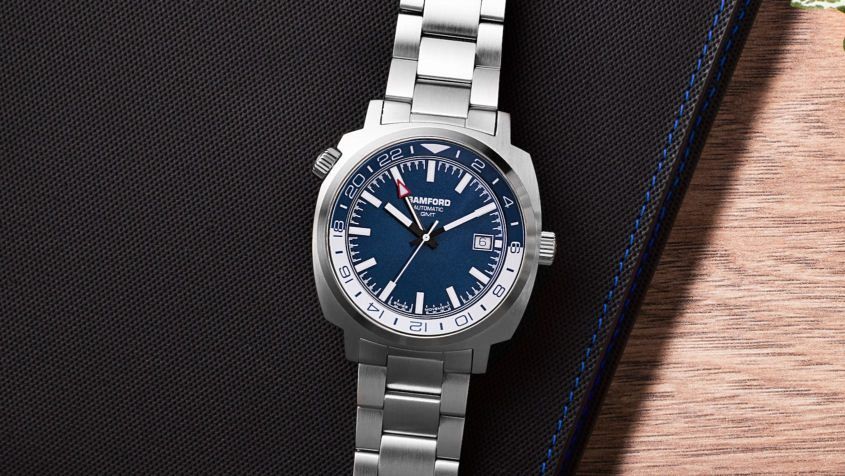 When a name renowned for its personalisation of higher-end pieces announces an off-the-shelf offering, it tends to raise eyebrows. However, the Bamford brand has defied expectations not once, but twice, now with the Bamford London GMT. Housing the self-winding Sellita SW330-1 25, it has already been widely pointed out that the Bamford GMT case and dial configuration is strongly reminiscent of the Zenith Sub Sea from the 1960s. But fixating on the fact that Bamford made a GMT watch that looks like something that already exists is ignoring the fact that’s kind of what Bamford is known for … They take an existing design and modify it to suit the desires of their customer. Where the Bamford DNA shines through is their highly effective use of contrast: penetrating combinations of ice blue, bright oranges and other unconventional colours against a matt black or brushed steel backdrop. In this respect, the new London GMT is consistent with Bamford’s design language. There is a lot to like about this GMT. The case itself is a wonderful blend of curved surfaces and sharp angles, which far from being incongruent, actually adds some visual interest to an otherwise bulky silhouette. The dial text is…
When a name renowned for its personalisation of higher-end pieces announces an off-the-shelf offering, it tends to raise eyebrows. However, the Bamford brand has defied expectations not once, but twice, now with the Bamford London GMT. Housing the self-winding Sellita SW330-1 25, it has already been widely pointed out that the Bamford GMT case and dial configuration is strongly reminiscent of the Zenith Sub Sea from the 1960s. But fixating on the fact that Bamford made a GMT watch that looks like something that already exists is ignoring the fact that’s kind of what Bamford is known for … They take an existing design and modify it to suit the desires of their customer. Where the Bamford DNA shines through is their highly effective use of contrast: penetrating combinations of ice blue, bright oranges and other unconventional colours against a matt black or brushed steel backdrop. In this respect, the new London GMT is consistent with Bamford’s design language. There is a lot to like about this GMT. The case itself is a wonderful blend of curved surfaces and sharp angles, which far from being incongruent, actually adds some visual interest to an otherwise bulky silhouette. The dial text is…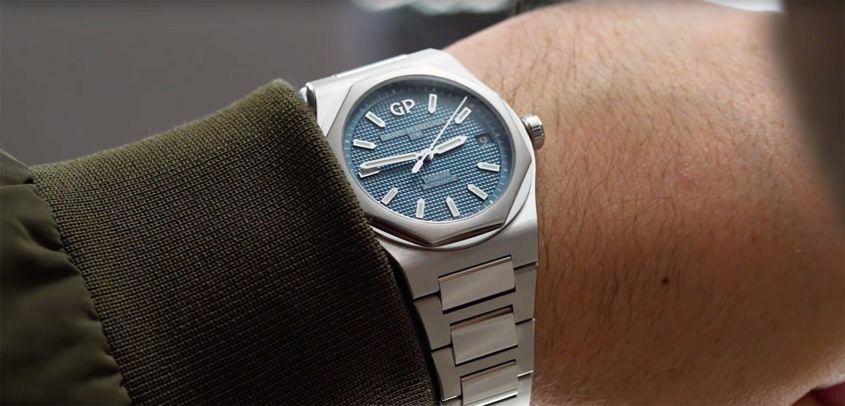 Editor’s note: In the world of luxury steel sports watches, the Girard-Perregaux Laureato family is underrated. More than two centuries since they started making watches, the Laureato is made by a brand that has some of the richest history in horology. In that time, Girard-Perregaux have added significantly to the art of mechanical watchmaking, with their three golden bridges tourbillon movement and their design of the first high-frequency watch which beats ten times per second. The Laureato family is also dripping in a ’70s charm that stems from the mix of curves and angles, and the blending of polished and brushed surfaces for an eye-catching finish on a watch. In terms of scarcity, Girard-Perregaux also produce significantly fewer watches than the other big players in the steel sports watch game. They manufacture approximately 10,000 watches per year, next to 40,000 from Audemars Piguet and 50,000 from Patek Philippe. All things considered, the Laureato represents a sleeper, which at the moment is vastly underappreciated by much of the watch buying community. A little while ago, we put together a list of luxury sports watches and it went – to use a technical term – bananas. There’s something about the combination of…
Editor’s note: In the world of luxury steel sports watches, the Girard-Perregaux Laureato family is underrated. More than two centuries since they started making watches, the Laureato is made by a brand that has some of the richest history in horology. In that time, Girard-Perregaux have added significantly to the art of mechanical watchmaking, with their three golden bridges tourbillon movement and their design of the first high-frequency watch which beats ten times per second. The Laureato family is also dripping in a ’70s charm that stems from the mix of curves and angles, and the blending of polished and brushed surfaces for an eye-catching finish on a watch. In terms of scarcity, Girard-Perregaux also produce significantly fewer watches than the other big players in the steel sports watch game. They manufacture approximately 10,000 watches per year, next to 40,000 from Audemars Piguet and 50,000 from Patek Philippe. All things considered, the Laureato represents a sleeper, which at the moment is vastly underappreciated by much of the watch buying community. A little while ago, we put together a list of luxury sports watches and it went – to use a technical term – bananas. There’s something about the combination of…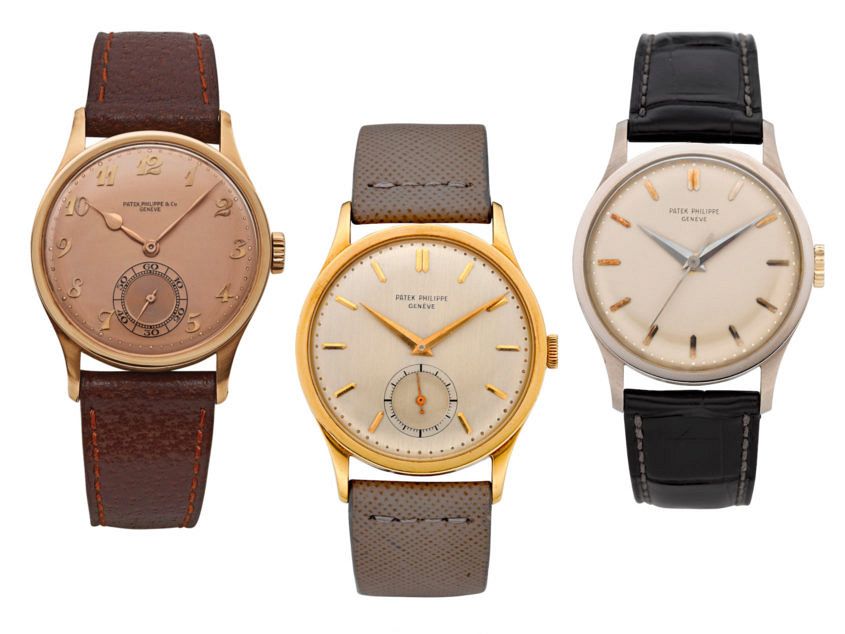 The Patek Philippe Calatrava is probably the most recognisable time-only collection of watches in Swiss watchmaking. Simple, three-handed watches made in precious metal that represent what Patek Philippe is about in its most distilled form – restrained classicism made to exacting standards. In this article by The Hour Glass, the history of the Calatrava is investigated, focusing on the most important models made in the nearly 90 years since the first reference was produced. Even though the core elements of the Calatrava have stayed the same, the number of variations over the years has seen the establishment of collectors-inspired scholarship to document the sheer number of different examples. If you’re looking for some Sunday reading that digs a little deeper, we’ve got you covered.
The Patek Philippe Calatrava is probably the most recognisable time-only collection of watches in Swiss watchmaking. Simple, three-handed watches made in precious metal that represent what Patek Philippe is about in its most distilled form – restrained classicism made to exacting standards. In this article by The Hour Glass, the history of the Calatrava is investigated, focusing on the most important models made in the nearly 90 years since the first reference was produced. Even though the core elements of the Calatrava have stayed the same, the number of variations over the years has seen the establishment of collectors-inspired scholarship to document the sheer number of different examples. If you’re looking for some Sunday reading that digs a little deeper, we’ve got you covered.